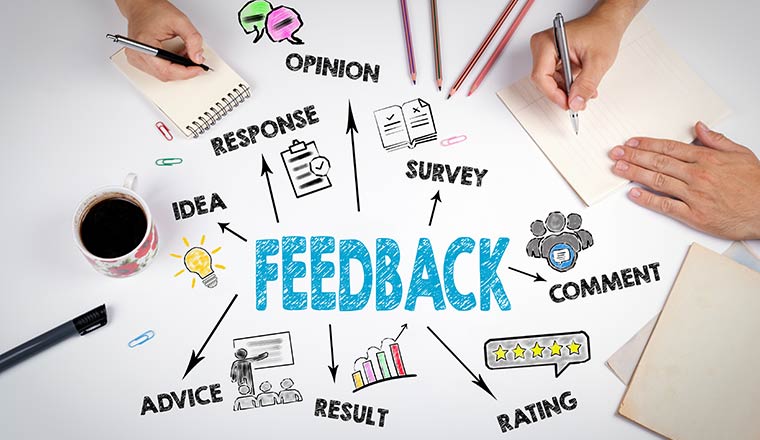Introduction
In today’s competitive business landscape, understanding and meeting customer needs is more critical than ever. Customer feedback plays a pivotal role in helping businesses gauge satisfaction, identify areas of improvement, and enhance customer loyalty. By listening to your customers, you can tailor your products, services, and overall experience to align more closely with their expectations, ultimately leading to increased satisfaction and business success.
In this article, we will explore the significance of customer feedback, strategies for collecting it, and how businesses can use this valuable data to drive growth, improve products, and strengthen customer relationships.
What is Customer Feedback?
Customer feedback is the information that customers provide about their experience with your business, product, or service. It can be positive or negative and comes in many forms, including surveys, reviews, social media comments, direct complaints, and informal conversations. The feedback could focus on various aspects, such as the quality of the product, the ease of using your website, the level of customer service, or the overall customer journey.
While customer feedback is often associated with satisfaction levels, it can also highlight pain points and areas for improvement that businesses might otherwise overlook. By regularly collecting and analyzing this feedback, companies gain a deeper understanding of customer preferences and can make informed decisions that align with market demand.
Why Customer Feedback is Important
-
Improves Customer Experience
One of the most significant benefits of customer feedback is its ability to improve the overall customer experience. Feedback allows businesses to identify what is working well and what is not, enabling them to make necessary changes to enhance the customer journey. Whether it’s simplifying the checkout process, offering better customer support, or improving product features, customer insights guide these improvements. -
Fosters Customer Loyalty
Actively seeking and acting upon digitalmarketing tips.info demonstrates that you care about your customers’ opinions and are committed to meeting their needs. When customers see that their feedback results in meaningful change, they are more likely to develop a sense of loyalty toward your brand. Loyal customers are more likely to return, make repeat purchases, and recommend your business to others. -
Enhances Product or Service Development
Feedback is invaluable in product or service development. It provides a direct insight into what your customers like or dislike about your offerings. By analyzing customer feedback, businesses can identify product flaws, gaps in features, and opportunities for improvement. This information helps businesses innovate and develop offerings that meet customer expectations and differentiate them from competitors. -
Identifies Areas of Improvement
Negative feedback, while difficult to hear, is crucial for identifying areas where your business needs improvement. Whether it’s slow customer service, faulty products, or confusing website navigation, constructive criticism from customers can shed light on aspects of your business that need attention. Addressing these issues quickly and effectively can improve customer satisfaction and prevent small problems from becoming bigger ones. -
Strengthens Marketing and Branding
Customer feedback can also provide valuable information for shaping marketing and branding strategies. Understanding how customers perceive your brand and the language they use to describe their experience can help refine messaging, advertising campaigns, and promotional strategies. Additionally, positive feedback can be leveraged in testimonials and social proof to enhance your brand reputation. -
Supports Decision-Making
Data-driven decision-making is essential for businesses that want to grow and thrive. By collecting feedback from customers, businesses can make more informed decisions about pricing, new product launches, and service enhancements. Feedback acts as a guiding force that helps companies align their strategies with actual customer needs and expectations.
How to Collect Customer Feedback
-
Surveys and Questionnaires
One of the most common methods for gathering customer feedback is through surveys and questionnaires. These can be sent via email, displayed on your website, or delivered through social media channels. Well-designed surveys allow businesses to ask specific questions about customer experiences, which makes it easier to collect actionable insights. Tools like SurveyMonkey, Google Forms, and Typeform make it easy to create and distribute surveys.Tip: Keep surveys short and concise to ensure a higher response rate. Ask a mix of open-ended and closed-ended questions to gather both quantitative data and qualitative insights.
-
Customer Reviews and Ratings
Many customers willingly share their feedback through reviews and ratings on websites like Google, Yelp, or product review platforms. These reviews are especially valuable because they provide authentic insights from customers who have already used your product or service. Positive reviews can be used to build trust, while negative reviews offer an opportunity to address concerns and improve your offerings.Tip: Encourage customers to leave reviews by sending follow-up emails after purchases and making it easy for them to submit feedback on various platforms.
-
Social Media Listening
Social media platforms are another rich source of customer feedback. Customers often share their experiences, ask questions, or leave comments about your products or services on platforms like Facebook, Twitter, Instagram, and LinkedIn. Monitoring these conversations through social media listening tools (e.g., Hootsuite, Brandwatch, or Sprout Social) can help you gather real-time feedback and identify trends, complaints, or opportunities.Tip: Respond to social media comments promptly to show customers that you value their opinions and are committed to providing a positive experience.
-
Customer Support Interactions
Every interaction with your customer support team is an opportunity to gather feedback. You can collect valuable insights by tracking the types of issues customers are facing and the outcomes of those interactions. Additionally, follow-up emails after a customer service call or live chat can include a satisfaction survey to gauge how well your team addressed the customer’s concerns.Tip: Use customer service feedback to identify training needs for your team and improve your overall support process.
-
Focus Groups
For more in-depth insights, businesses can organize focus groups to engage directly with customers. Focus groups allow you to explore customer opinions in a more conversational setting and ask follow-up questions to dig deeper into their thoughts and feelings about your brand. This method is particularly useful when launching new products or testing changes to existing offerings.Tip: Ensure that your focus group includes a diverse range of participants to capture a wide variety of perspectives.
-
Customer Satisfaction (CSAT) and Net Promoter Score (NPS)
CSAT and NPS are widely used to measure customer satisfaction. CSAT surveys typically ask customers to rate their satisfaction with a specific interaction, such as a product purchase or customer service experience. NPS, on the other hand, gauges overall customer loyalty by asking customers how likely they are to recommend your business to others on a scale from 0 to 10.Tip: Use CSAT and NPS data to track changes in customer satisfaction over time and identify any shifts in customer perception.
How to Utilize Customer Feedback
-
Identify Trends and Patterns
Regularly analyze customer feedback to identify common themes and recurring issues. By doing so, you can uncover trends that may highlight areas for improvement or innovation. Look for patterns in customer complaints, compliments, or suggestions to understand where your business excels and where there are opportunities for growth. -
Act on Customer Suggestions
One of the most impactful ways to use customer feedback is to act on the suggestions and concerns raised by your customers. Whether it’s adding new product features, improving customer service, or refining your website’s user experience, demonstrating that you are taking action based on feedback shows customers that their opinions matter. -
Communicate Changes to Customers
After making improvements based on customer feedback, be sure to communicate these changes to your customers. This reinforces the idea that you listen to and value their input. Use email newsletters, blog posts, or social media channels to inform your customers about the updates you’ve made as a result of their feedback. -
Integrate Feedback into Decision-Making
Customer feedback should be incorporated into strategic decisions at all levels of the organization. Use feedback to inform product development, marketing campaigns, customer service policies, and other key business decisions. Involving customer feedback in decision-making helps ensure that your business is always aligned with customer needs and expectations. -
Follow Up with Customers
Don’t just collect feedback—engage with customers about the changes you’ve made based on their input. Following up shows that you value their feedback and are committed to improving. It also encourages customers to continue sharing their opinions in the future, creating a feedback loop that drives continuous improvement.
Conclusion
Customer feedback is an invaluable tool for any business looking to grow and improve. It provides insights into customer needs, pain points, and satisfaction levels, allowing businesses to make informed decisions and build stronger relationships with their customers. By adopting effective strategies to gather, analyze, and act on feedback, businesses can enhance the customer experience, increase loyalty, and ultimately drive success. Remember, listening to your customers is one of the most powerful ways to ensure that your business stays relevant and competitive in a rapidly changing market.




